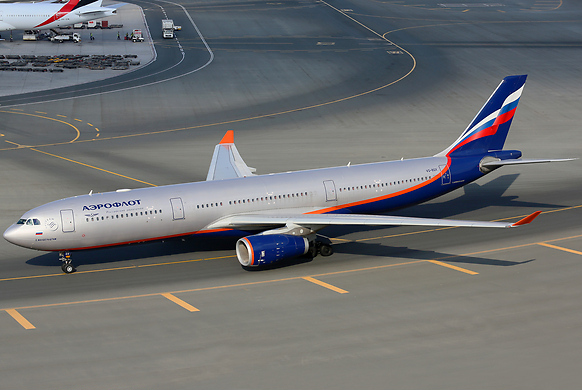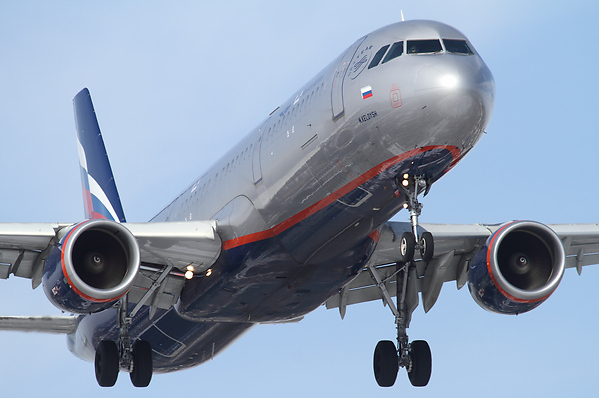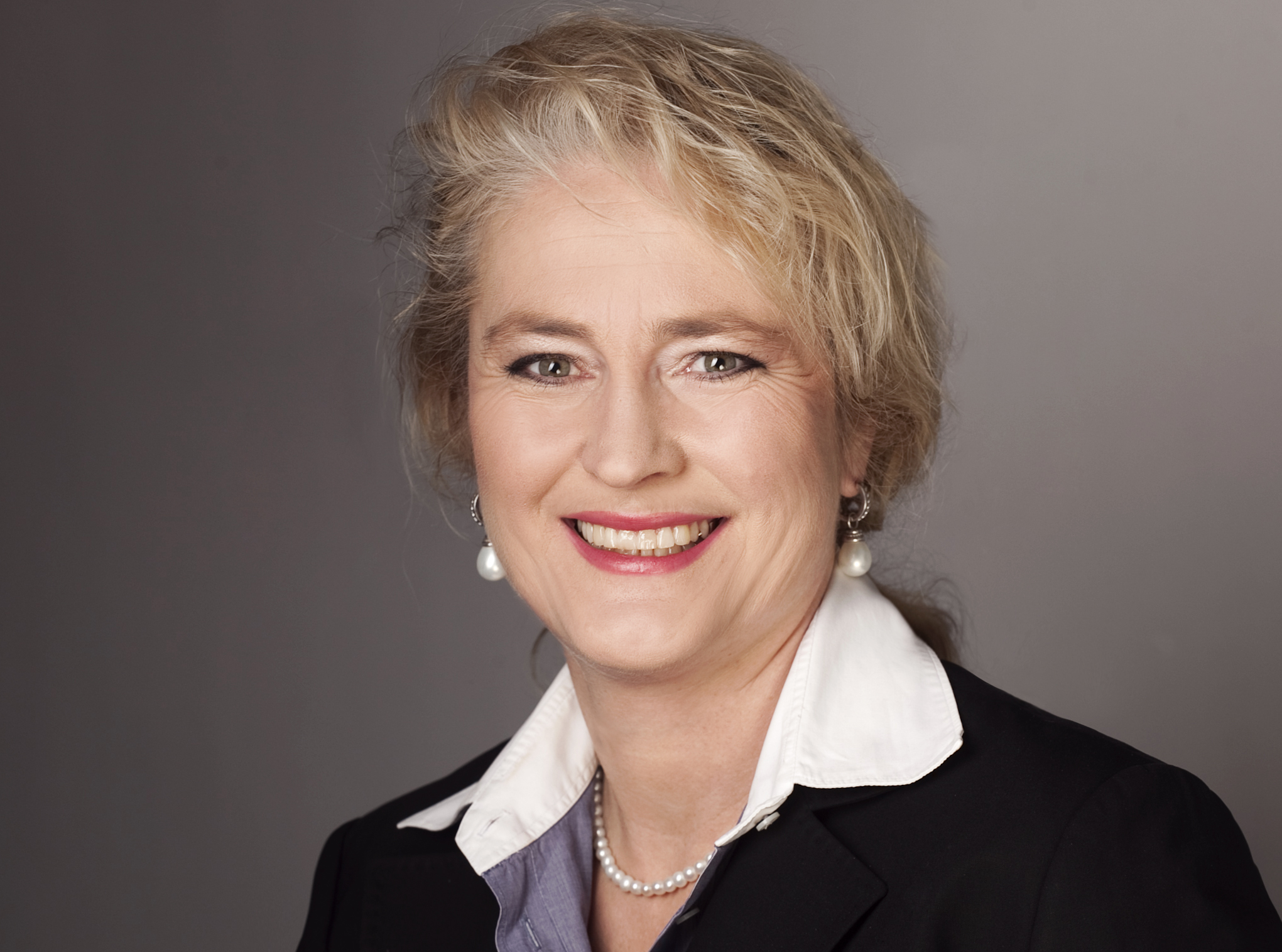Articles
| Name | Author | |
|---|---|---|
| Column: Pithy Bites | Paul Saunders, Global Product Manager, Flatirons Solutions | View article |
| EFB Together we can do more. Orgainizational Strategy White Paper | Philip J. Benedict, Customer Strategy Development, Closed Loop | View article |
| A Giant Step Into the Future – Aeroflot OCC and HCC IT Upgrade Case Study | Gesine Varfis, Advisor to the COO, Aeroflot | View article |
A Giant Step Into the Future – Aeroflot OCC and HCC IT Upgrade Case Study
Author: Gesine Varfis, Advisor to the COO, Aeroflot
SubscribeA Giant Step Into the Future – Aeroflot OCC and HCC IT Upgrade Case Study
 Last year Aeroflot celebrated 90 years of operations, not only reflecting on a great history but also looking forward to a bright future. The course is set for quality, safety and profitability while the overall target is to close up to the top echelon of aviation leaders. In the years since taking the first steps in Russian transportation, Aeroflot has demonstrated strong innovative and re-engineering capabilities. As of today, the airline has grown into a global player committed to the highest standards of performance by applying the latest management practice, processes and IT; supporting every aspect of the business without losing its ethos for Russian culture and ways.
Last year Aeroflot celebrated 90 years of operations, not only reflecting on a great history but also looking forward to a bright future. The course is set for quality, safety and profitability while the overall target is to close up to the top echelon of aviation leaders. In the years since taking the first steps in Russian transportation, Aeroflot has demonstrated strong innovative and re-engineering capabilities. As of today, the airline has grown into a global player committed to the highest standards of performance by applying the latest management practice, processes and IT; supporting every aspect of the business without losing its ethos for Russian culture and ways.
Mainly owned by Government, Aeroflot has grown in scale and stature; not through protectionism but with a competitive product. Today a growing number of international passengers connect via Aeroflot’s hub at Sheremetyevo. After making investments into the latest fleet, safety first and a strong focus on service quality, Aeroflot is ready to tackle the challenges of two-digit growth rates by aiming to facilitate service and operational excellence for connecting passengers.
Seven-mile boots

Technology speed jump
Aeroflot has been driven by and overloaded with printed documents (loadsheet, PIL, manuals, etc.), manual data entries and voice communication. To reduce the overload of voice communication, ACARS and PDAs have been introduced. ACARS has been introduced for OOOI (Out of gate / take Off / On the ground / In the gate), aircraft positioning, maintenance and flight related information (flight plan, weather, loadsheet, etc.) exchange between ground and cockpit. However, a fully ACARS message managed airline on the ground and in the air isn’t the target with the latest options of satellite, 3G, wireless and RFID communication offering greater coverage. At the same time the introduction of PDA solutions on the ramp has improved performance management and massively reduced voice communication overkill. However, the automation of sharing information is to be improved to a bi-directional exchange of information on passengers, loading / weight & balance, TOBT (target off-block time), delay codes, specials or next information status.
Facing a not so easy hub and passenger connection environment Aeroflot bridges this by close cooperation with its partners. It is and will be Airport CDM (collaborative decision making) decisions and predictability based on precise real-time information which will be the differentiation factor to allow peak operations at capacity limits. In regards to real-time information the target is not to follow step-by-step the path already beaten by others, but to join forces with leading industries to determine and implement leading solutions.
Industry leaders have based ground and cockpit communications on ACARS messages, a highly cost intense mode of communication. While Aeroflot has discussed with the Civil Aviation Authorities approval for and introduction of classic modes of operations communication, the airline now aims to gain 3G, 4G or wireless capabilities which will transfer data flows from the aircraft via EFB.
Aeroflot has a reactive in-flight support established via ACARS. The OCC reacts to cockpit requests as soon as the flight plans have been shared. With the new flight planning system implemented, Aeroflot aims to introduce a proactive inflight dispatch support to supply the cockpit with latest weather, fuel saving, route, airport, ATC or passenger connection information whenever savings or better information are available. This is also where the business starts driving IT, working on variable taxi times, flight planning and minimum ground time management to reduce fuel burn and holdings in a non-coordinated airport environment and gain the last minutes for saving passenger connections.
Implementation and a new operations order
While implementing the ground base, Aeroflot also investigated the latest means and fit of data as well as information exchange for ground communication to allow faster and better decisions. For core stakeholders Aeroflot aims for full interactive, mobile, real-time information device interaction (PDAs and tablets as well as smart phones) to assure the highest levels of passenger care and satisfaction and, at the same time, provide all parties with the latest information. The vision Aeroflot has in mind is that the Ramp Agent PDA device will change from an ‘entry of time stamps’ device (e.g. start and end of a turnaround process like cleaning, catering, or fueling) into a device automatically displaying the situation and creating awareness for critical situations.
Today the Ramp Agents react to Ground Dispatch or HCC advice and collect time stamps (pure outgoing channel of data). Their decisions are based on information received verbally or based on the status when they left their office. Especially during disruptions, there is not much time to investigate the situation or to consider solutions to meet connections or to save the turnaround. The only party with the full overview is the HCC. With the introduction of interactive devices the ramp agent will change from an order receiver to a solution manager by being integrated in the information loop. They will change from a human entry interface to an empowered manager of the turnaround who manages the situation and suggests solutions based on the information. The idea is that the PDA will be a decision support tool for the ramp agent, highlighting irregularities and late processes and what is not in line with common practice. This also means a change of business processes in such a manner that the ramp agent applies management by exception through following up disruptions based on the information displayed in real-time.
Like many other airlines, Aeroflot cares about passenger satisfaction and service quality which is closely connected to the latest information on a passenger’s travel / flight status. The passenger service agents work with mobile phones and HF devices where the latest information updates are only received verbally. In times of disruptions this flow of information is not manageable. Therefore the aim is to provide the station team with mobile devices that give them the latest updates on passenger connections, flights and the individual status of the passengers they will support right upon their arrival… as well as allowing the setting of time stamps for the processes they own (e.g. boarding, start and end of a connection process, etc.). Devices will also be available for the cabin crew to add comments, set time stamps, document the cabin flight report and to provide them with the latest passenger and flight information (PIL, special meals, service, connection information, etc.).
Over years the time stamp setting responsibility and correctness has been an issue for managing processes. The question was, ‘who sets the time stamp?’ the process owner (e.g. catering truck driver, catering loader), the process supervisor or the ramp agent? Even with today’s set up of the ramp agent as a ‘neutral’ party setting the time stamp for the start and end of a process, by pressing the respective button on the PDA display, the correctness of the time is open to dispute. Other airlines decided to apply ACARS messages to determine the start and end of a process. With this approach a time frame is set (e.g. for the ACARS message of right forward or aft cabin door opened and closed). However it does not necessarily mean that a process has started or ended, so certain intelligence as well as process owner time stamps have to be additionally implemented to allow the holistic management of process performance by time stamps. The future for the correct automation of time stamps will be provided by RFID based technology.
RFID is slowly making its way into aviation: the technology has already been introduced to aircraft manufacture, baggage management, paperless check-in and maintenance. RFID has not yet been introduced for turnaround management. However, the RFID business case looks promising but needs a massive infrastructure investment which has not so far been undertaken by any airline. With the introduction of the new HCC turnaround management system, Aeroflot will apply the proven PDA based technology in place while at the same time investigating how and when RFID could replace ACARS and manual PDA entries. At the same time the team is brainstorming whether head up displays (HUDs) could be an option instead of PDA devices which can be hard to read, handle and carry in winter operations.
Improvements for passengers
Compared to operations information, passenger information management is fragmented. Aeroflot has a webpage where passengers are informed as well as classic customer service call centers. The airline also started to inform connecting passengers in-flight about their onward connection status and give them advice and assistance in case of a disruption via an ACARS message sent from the HCC to the cockpit to be shared by the cabin crew with the passengers. Tomorrow’s wireless IFE (in-flight entertainment) communication will allow passengers to access services such as satellite live television broadcasts as well as safety instructions in their native language. The IFE will also display connecting flight information turning a common announcement of gate changes into an individual one for each passenger with individual assistance and advice as to how Aeroflot will ensure their seamless onward connection or being advised about how Aeroflot will take care of them if a connection is lost. Moreover individual information shared with the passenger via phones and tablets aims to enhance communication as well as interaction to assist and guide them at all times during their connection and beyond.
The setting of an integrated holistic Operations vision, the determination of a strategy, the transfer of the blue print to an action plan on how to achieve it complemented by a cost benefit analysis proving that transparency and real-time information pays off is a challenge of its own. Aeroflot has managed this phase in close cooperation with consulting partners to benchmark practices, gain third party views and best practice know-how before setting targets. However with all this holistic effort, the facts faced during implementation change the picture when the concept hits reality.
Continual learning and improvement
%20image%202.jpg) There have been numerous lesson learned. One is that Aeroflot has been most successful when vendors, IT and the business work closely together. Easy to say, but quite hard to put into practice with competing vendors needed to get to the table. Moreover IT and the business speak different languages. Therefore Aeroflot Operations and IT projects are managed by two project managers, one from IT and one from the business, who jointly drive the results towards best practice with the business, IT, consultants and vendors. The overall success of the project has been driven by the change management capabilities of the project sponsors and the project management parties… think out of the box, allow other views, give thought to other views, challenge views, support the decisions made and communicate results, status and issues.
There have been numerous lesson learned. One is that Aeroflot has been most successful when vendors, IT and the business work closely together. Easy to say, but quite hard to put into practice with competing vendors needed to get to the table. Moreover IT and the business speak different languages. Therefore Aeroflot Operations and IT projects are managed by two project managers, one from IT and one from the business, who jointly drive the results towards best practice with the business, IT, consultants and vendors. The overall success of the project has been driven by the change management capabilities of the project sponsors and the project management parties… think out of the box, allow other views, give thought to other views, challenge views, support the decisions made and communicate results, status and issues.
Concepts are nice but challenges come with detail. This means that, with the implementation of the OCC and HCC systems, a continuous improvement management process has been started, challenging current solutions as well as identifying future needs. Change requests are a common feature of major IT implementation projects, but they need to be pushed and managed to achieve the promised savings. They need a good, close partnership between airline and vendor as well as sophisticated relationship management by both sides to meet expectations.
For Aeroflot it is important not to lose sight of the target internally as well as externally. The challenge is to keep in mind what is needed to match the big picture, to gain Operations leadership. With the ground based setting, this has been taking into account with the following adaptations targeted amongst others:
- Delay code management and reporting beyond IATA standards, which allows department and responsibility analysis;
- Standard airport collaborative decision making, TOBT, COBT (calculated off-block time), etc.) by connecting all stakeholders via real-time data integration;
- More precise estimated and calculated taxi times.
Today’s state-of-the-art systems are precise with their scheduled and actual times; however, the setting of estimates and calculated times have room for improvement. In the case of taxi times the estimated on block times are based on a single taxi time figure (e.g. inbound taxi time of 15 minutes can only be adapted by IT database administration) which means that the estimated off block time is determined by a static taxi outbound time, a variable flight time determining the estimated landing time plus a fixed taxi time (always + 10). However experience shows that taxi times vary as much as flight times (time savings could be generated up to 20–50%). Based on these times the new HCC system calculates the passenger connection times and advises if a connection is worth saving, needs action to be saved, or if it needs to be re-booked to another flight because the connection will be missed. Even in Sheremetyevo, with only two runways, taxi times vary according to time of day, different traffic peaks, weather variations or other irregularities. As suggested by EUROCONTROL and airport collaborative decision making studies, taxi times need to be variable as well as adaptable to allow a more precise evaluation of passenger connections and turnaround management. It is exactly in the connections and turnarounds where every minute counts. Here the standard tools make airlines lose crucial time. Aeroflot plans to close the taxi gap by time- and distance-dependent taxi time management for each possible distance combination between landing and stand location to gain better times. This enhancement will be targeted in close cooperation with Sheremetyevo airport to reduce taxi holding times, and to create savings of crew times, fuel and gate allocation.
Contributor’s Details:

With an MBA and BA in North American Studies from the Free University of Berlin Gesine joined Aeroflot in March 2013 and is currently engaged upgrading hub management software and re-engineering related processes. Last year’s projects focused on the upgrading of the OCC organization, functions and software. Gesine was previously a Managing Consultant at Lufthansa Consulting for more than 10 years, moderated the Fuel Think Tank and managed the Operational Excellence unit. Prior to that, Gesine worked in Globe Ground Berlin.
Aeroflot
Aeroflot is Russia’s flagship carrier which in 2013, with subsidiaries, carried 31.4 million passengers, to more than 1,000 destinations in 178 countries worldwide. One of the youngest fleets in Europe, Aeroflot’s 150 Airbus, Boeing and Sukhoi airliners have an average age of 5.6 years. A member of the SkyTeam global airline alliance, Aeroflot’s European Community (SAFA) safety index, is comparable to global peers. In 2013, Aeroflot was, for the second time, named Best Airline in Eastern Europe by SKYTRAX
Comments (0)
There are currently no comments about this article.

To post a comment, please login or subscribe.